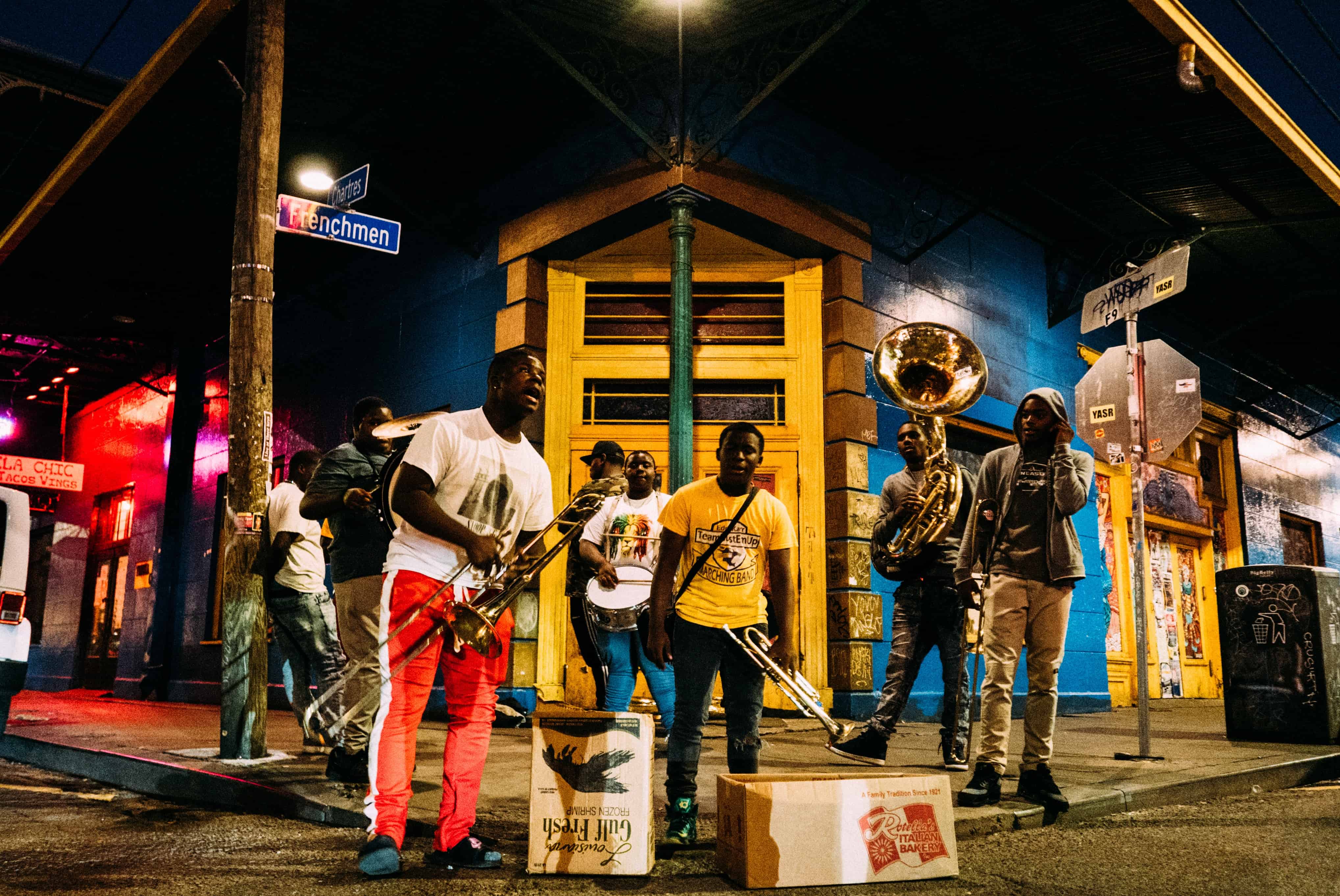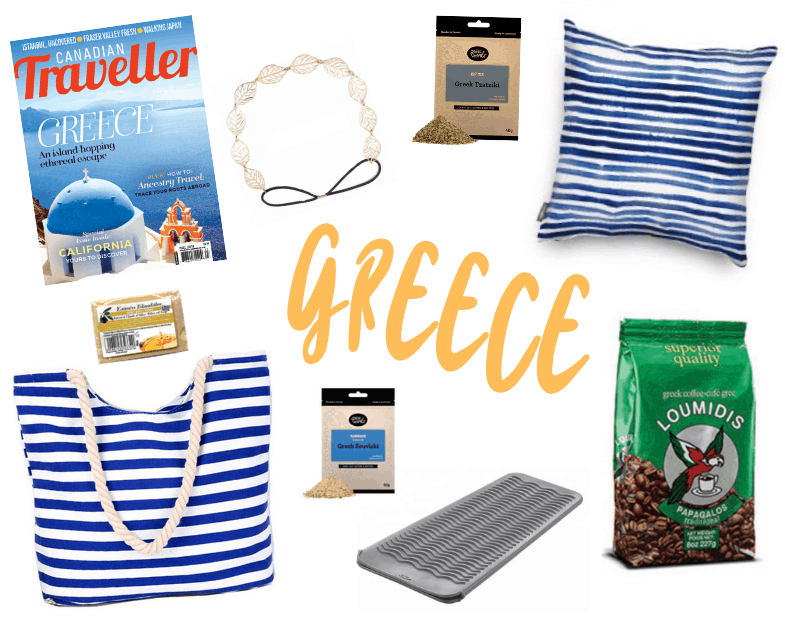
“Well, we're not dead yet!”
My mom says, clutching a bouquet of orange and green silk flowers, alongside her childhood friend of over 60 years. They’ve just been wished a happy St. Paddy’s Day by a couple dozen Irishmen at the start of the New Orleans’s annual Irish Channel Parade, where each flower is presented with a kiss on the cheek. By the time the parade is over, we’re draped in beads and have a bag full of produce. Just like a Mardi Gras parade, the float riders toss “throws” to parade-goers, but only at this one do you catch raw potatoes, carrots and heads of cabbage intended to fill the pot for a traditional Irish boiled dinner (just add corned beef).
I could have brought these born-and- raised Boston-Irish ladies visiting New Orleans for the first time to one of the many neighbourhood pubs or Catholic churches for a dose of Irish charm and charity, but the kisses wouldn’t have been a guarantee. When I inquire with Matthew – a third-generation Irish- New Orleanian bar owner – about who first started the kissing tradition, he’s uncharacteristically stumped, but then concedes, “It was probably the Italians.”
As one wades into the waves of cultures that New Orleans has absorbed in its history, things become as deep and murky as the winding, muddy Mississippi River that gives
the city its “Crescent City” nickname. Most cultural groups can lay claim to at least one impressive population statistic that testifies to their influence at different points in time: Irish (one in five residents), Sicilian (80 per cent of the French Quarter), African (outnumbering Europeans six-to-one during the first French occupation), free people of color (doubling in population during the 40 years of Spanish rule), and Haitian refugees who doubled the population of the entire city after the Haitian Revolution (coinciding with the American purchase of Louisiana from France in 1803). And this doesn’t even include the flow of Greek, Cuban, German, Jewish, Latin American and Vietnamese immigrants who also came, or the indelible impact of the Creole culture – a word used to identify a group of people that is loosely translated from Spanish-Portuguese as “native to the New World.”
I understand my mom’s mid-parade flood of joy in being alive; New Orleans does that to you. Its sustained capacity for celebration no matter what the occasion – dancing at funerals is not uncommon – is built on a spirit of solidarity in our shared humanity;
a recognition that life can be both wondrous and heartbreaking, but we’re lucky to be living it for the limited time that we are a afforded. The above-ground tombs in New Orleans’ cemeteries are a visual reminder of that, as much as the visceral layers of history and all the souls that came here before us and never really left (which explains why ghost tours are so popular).
Nowhere are ancestors more present than in Congo Square. On a walking history tour of the Tremé (America’s oldest African-American neighbourhood), our tour guide Malik brings us to the ground where enslaved Africans were once allowed to gather on Sundays; it’s a place Indigenous people shared with them. Music historians trace the origin of all American music – jazz, funk and eventually rock and roll – back to this place, where African beats, rhythms, sounds and movement were infused with traditional European instruments, like German brass. It’s also where one of the city’s most deeply spiritual Indigenous cultural traditions began. The Black Masking Indians, whose tambourine-driven call-and- response chants of liberation and pride are the foundation of funk music.
On the edge of Congo Square lies a sprawling and wise live oak tree where single pennies have been placed in the deep grooves of its bark and dried red beans and flower petals tossed on the ground around it. This is the Ancestor Tree, a place where sacred offerings and cleansings in the Afro-Caribbean Vodou religion are performed, a spiritual practice rooted in the honouring of one's ancestors. New Orleans is often referred to as the northern-most city in the Caribbean, which is reflected in spirituality, language, music, food and dance.
“There are so many different international cultural influences here, and Louisiana as a whole has many Indigenous cultures that have shaped what we enjoy about music and movement today,” says Moe Joe, a performer, cultural curator and dance fitness teacher who immerses students like me in what she calls a Louisiana Afro-Creole experience of music and dance. “Second lining, bouncing and twerking are ways we follow our rhythms and express our spiritual vitality and freedom unabashedly, and that is a deep magical attraction and remedy for those who visit.”
On our last night, I remember that it’s St. Joseph’s Day, and every Italian restaurant, Catholic Church and even some houses and dive bars will assemble elaborate altars to honour the saint of relief from famine in Sicily. I decide to try and get our party of three into Irene’s. I warmheartedly appeal to the host, Orlando, to please squeeze us in, and it works. He escorts us to a table right near the candlelit altar with tiers of food platters, fig cookies, figurines, flowers, lemons and a jar in the middle collecting donations to benefit the local food bank. My mom, surprised we got a table, says that Orlando and I must speak the same language, to which he replies, “We do... it’s the language of love.”
Before France colonized it in 1718, New Orleans was called “Bulbancha,” a Choctaw word meaning “the place of many tongues.” It has been, and will hopefully always be, a cultural melting pot – newcomers and visitors alike just need to be willing to melt into it. Speaking the language of love helps.
When You Go:

WHAT TO DO: To start your trip, let Malik at Know NOLA Tours immerse you in the culture of the city. Later, better understand the legacy of free people of color in a historic home at Le Musée de f.p.c. and then discover the city’s street culture traditions at the Backstreet Cultural Museum. Try Matthew’s grandparent’s cocktail recipes at St. Pat’s in the Irish Cultural Museum. Break a sweat and drop your body deep into the Louisiana dance culture in a class at the Moe Joe Gallery.
WHERE TO DINE: Enjoy a Creole-soul food lunch buffet at Lil Dizzy’s Café in the Tremé, where everyone is interesting (including you). Let the mystique of the French Quarter seduce you at Antoine’s, the city’s oldest restaurant and tour the private dining rooms of the founding Mardi Gras parade krewes. Irene’s Cuisine will feed you Creole-inspired Italian food and wine with love in an irresistibly romantic atmosphere, year-round.
WHERE TO STAY: Slip into a residential neighborhood oasis at the 1857 Terrell House Bed & Breakfast in the Lower Garden District, or the elegant Eliza Jane Hotel, located in the converted 19th-century Picayune newspaper downtown office named after the first woman publisher in the nation.

Travel the world with Canadian Traveller
Experience The World Subscription Box
Do you want to travel to a new country every three months? You can!
Each season, Canadian Traveller ships a destination-themed box curated with 5+ items that evoke the sights, flavours and decor of a country.
Take a peek at our fall 2019 ETW box which brought our readers to Greece.



 Subscribe today
Subscribe today